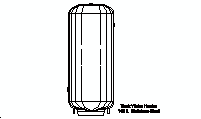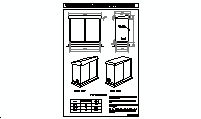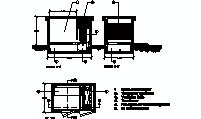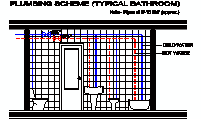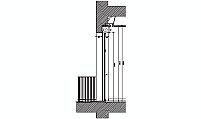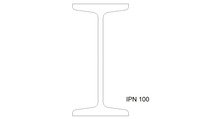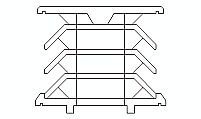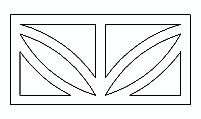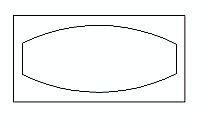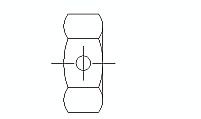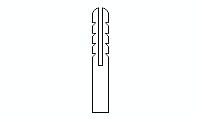CAD Blocks categories
 3D models
3D models home furniture
home furniture sanitary ware - bathrooms
sanitary ware - bathrooms professional equipment
professional equipment doors and windows
doors and windows people and animals
people and animals plants and trees
plants and trees vehicles - transports
vehicles - transports architectural details
architectural details mechanical - electrical
mechanical - electrical urban planning - civil works
urban planning - civil works safety health construction
safety health construction accessible design
accessible design drawing sheet
drawing sheet signals
signals construction machinery
construction machinery accessories and objects
accessories and objects maps and street maps
maps and street maps
Satellite Dish and Parabolic Antenna CAD Block - Technical Side View

size: 8 kb
category: electrical, mechanical and HVAC
related categories:
description: satellite dish and parabolic antenna, featuring its side elevation. The design showcases the reflector, LNB, mounting arm, and mast with precise structural components. This antenna is commonly used for telecommunications, satellite TV, and internet connectivity.
file extension: .dwg CAD - AutoCAD software
Key Features and Applications of Satellite Dishes and Parabolic Antennas
Components and Functional Features of the Satellite Dish
This satellite dish CAD block illustrates a side elevation with key functional components. These include:
- Reflector: The parabolic dish captures satellite signals and focuses them on the LNB. Its precise geometry ensures maximum signal gain.
- Low-Noise Block (LNB): Located at the focal point, it amplifies and converts high-frequency satellite signals to lower frequencies for processing.
- Mounting Arm: A sturdy arm that holds the LNB in the exact focal position, designed for durability and alignment.
- Mast and Mounts: The mast secures the parabolic antenna to a wall or rooftop, with adjustable mounts for azimuth and elevation settings.
- Mounting Brackets: Ensure the reflector remains stable under various weather conditions.
The integration of these components guarantees high-performance signal reception in residential and commercial setups.
Dimensions and Materials for Satellite Dishes and Parabolic Antennas
Satellite dishes and parabolic antennas are available in a range of standard sizes to suit different applications. Common reflector diameters include:
- Small: 45 cm (17.7 inches) for residential satellite TV.
- Medium: 75 cm (29.5 inches) to 120 cm (47.2 inches) for internet and commercial use.
- Large: Over 200 cm (78.7 inches) for professional telecommunications.
These antennas are typically made from aluminum or galvanized steel, coated with weather-resistant paint. Mounting arms and brackets are reinforced with stainless steel or alloy to withstand high wind loads. Most designs adhere to standards like the FCC Part 15 in the USA and IEC 60950 for global safety compliance.
FAQs About Satellite Dishes and Parabolic Antennas
- What is the purpose of the parabolic reflector?
- The reflector focuses incoming satellite signals onto the LNB, maximizing signal strength and minimizing interference. Its precision design enhances overall performance.
- What materials are used in satellite dishes?
- Reflectors are made of aluminum or steel, while mounting arms and brackets use corrosion-resistant materials like stainless steel. Plastic is used for the LNB housing to protect it from the elements.
- What are standard sizes for residential antennas?
- Residential antennas typically range from 45 cm to 75 cm (17.7 to 29.5 inches) in diameter. Larger sizes are used for enhanced performance or multi-satellite reception.
- How are satellite dishes aligned?
- Alignment involves adjusting azimuth and elevation angles to point the dish at a specific satellite. Tools like signal meters or mobile apps are often used for precise calibration.
- What standards must these antennas meet?
- In the USA, antennas comply with FCC Part 15, while in Europe, EN 55032 governs electromagnetic compatibility. Global standards like IEC 60950 ensure safety and durability.
Benefits and Applications of Satellite Dishes
Satellite dishes offer exceptional signal reception due to their precise geometry and high-gain performance. They are widely used for:
- Telecommunications: Point-to-point data transmission and satellite communication.
- Television: Satellite TV reception for residential and commercial purposes.
- Internet: Providing broadband access in remote or rural areas.
- Research: Astronomical and meteorological data collection.
These antennas are highly versatile, durable, and suitable for various environments. Their modular design allows easy installation and maintenance.
History and Evolution of Satellite Dishes
Satellite dishes and parabolic antennas have evolved significantly since their introduction. Early designs were made of heavy materials, limiting their use. Modern versions utilize lightweight and weather-resistant materials like aluminum and composites, making them more efficient and durable.
Today, advanced technologies allow for higher precision in manufacturing, ensuring better alignment and signal reception. Regulatory standards like FCC Part 15 and EN 55032 guarantee performance and safety. These antennas are now essential in global communication systems, connecting remote locations and supporting scientific research.






